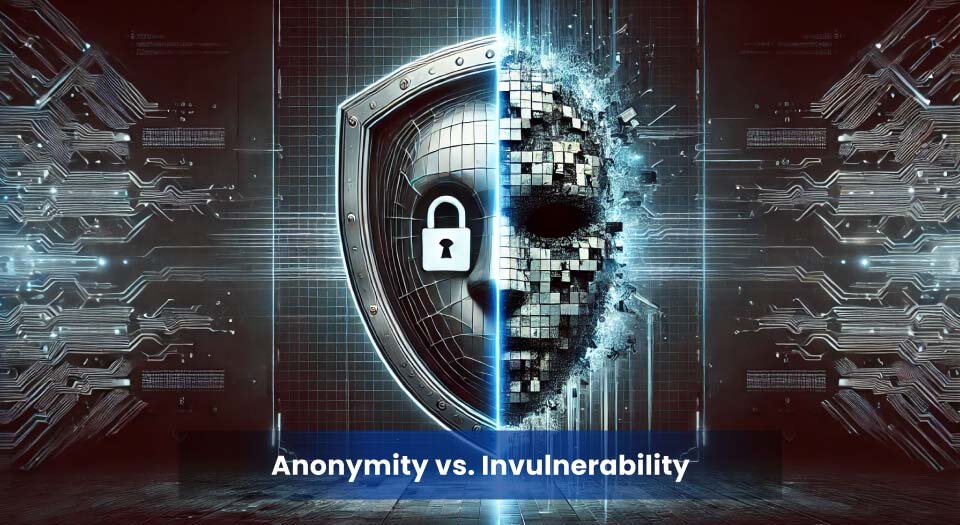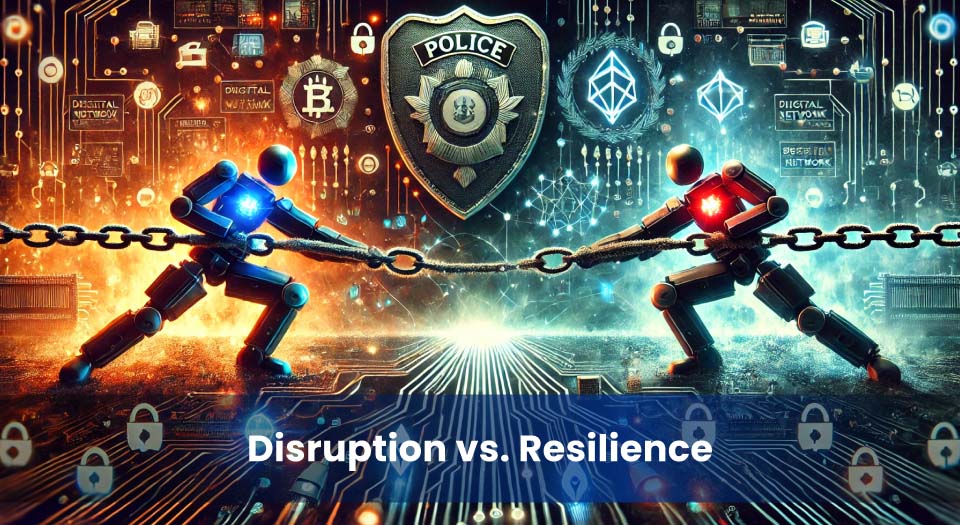
The Dual Nature of the Dark Web
Is the Dark Web Getting Safer or More Dangerous? This question has become increasingly relevant as global interest in cybersecurity, online anonymity, and digital threats continues to rise. Once regarded as a niche network for privacy-focused communication, the dark web has evolved into a complex ecosystem where both lawful and unlawful activities coexist.
On one hand, it offers journalists, whistleblowers, and dissidents a means of communication free from surveillance. On the other, it has become a haven for illicit marketplaces, ransomware gangs, and cybercriminal operations.
This article explores whether the dark web, in 2025, is becoming more secure for users—or more dangerous for society. We will assess its technological evolution, marketplace risks, law enforcement efforts, and the role of user behaviour in shaping its future.
As digital frontiers expand, understanding this hidden layer of the internet is no longer optional—especially for businesses and cybersecurity professionals aiming to stay ahead of emerging threats.
The Evolution of the Dark Web: A Timeline
Over the past two decades, the dark web has undergone a significant transformation. From its origins as a privacy-preserving environment to its current status as a complex network of both legitimate and criminal activity, understanding this evolution is essential in evaluating Is the Dark Web Getting Safer or More Dangerous.
The journey began in 2002 with the launch of the Tor Project, designed to promote anonymous communication. By 2011, the emergence of Silk Road marked the start of large-scale darknet markets, where illicit drugs, stolen data, and forged documents were traded.
The takedown of Silk Road in 2013 by the FBI did not deter cybercriminals; instead, it gave rise to a new generation of marketplaces such as AlphaBay and Hansa, which were later dismantled through coordinated global operations. Since then, the dark web has grown more resilient, embracing decentralised infrastructures and cryptocurrencies like Monero to enhance anonymity.
As of 2025, while some security improvements make the environment technically more robust, the nature of activity hosted there has shifted toward increasingly dangerous threats, including ransomware-as-a-service and cyber-weapons trade.
According to the Brookings Institution, the growing anonymity of cryptocurrency tools has severely challenged crime investigations and international sanctions, highlighting the evolving complexity of these hidden networks.
📜 Timeline of the Dark Web Evolution
2002: Launch of the Tor Project enables anonymous web access.
2011: Silk Road becomes the first major darknet market for illicit trade.
2013: FBI takes down Silk Road; new darknet markets rapidly emerge.
2017: Global police shut down AlphaBay and Hansa Market.
2020–2023: Rise of decentralised platforms and Monero-based transactions.
2024–2025: Surge in ransomware gangs and cyberweapon marketplaces.
Security Advances on the Dark Web: A False Sense of Safety?

Advanced Encryption: Security or Concealment?
In recent years, the dark web has witnessed a surge in the use of end-to-end encryption, multi-layered anonymity, and decentralised protocols. These technical advances, while originally designed to protect privacy and digital rights, have also allowed criminal actors to operate with unprecedented stealth.
Users today rely on tools like Tor, I2P, and encrypted messaging platforms to mask their identities and activities. Moreover, cryptocurrencies such as Monero and Zcash, which offer stronger privacy than Bitcoin, are increasingly preferred for illegal transactions.
These developments have led some observers to believe that the dark web is becoming safer. However, a deeper look reveals that while anonymity has increased, safety has not. In fact, security advancements have created a false sense of protection, particularly for inexperienced users who misunderstand the distinction between anonymity and invulnerability.
Challenges for Law Enforcement and Ethical Hacking
As platforms become harder to trace, law enforcement agencies face greater difficulty in conducting surveillance and criminal investigations. This concern is addressed in a 2021 report by the Brookings Institution, which explores the need for lawful hacking and new frameworks to access encrypted
While these tools complicate crime detection, they also spark global debates around privacy, ethics, and digital freedom. The critical question remains: Is the Dark Web Getting Safer or More Dangerous, and for whom?
| Feature | Traditional Internet | Dark Web |
|---|---|---|
| Encryption | Mostly partial (HTTPS-based) | End-to-end and multi-layer encryption (e.g. Tor, I2P) |
| Traceability | High – IP addresses and user behaviour are easily tracked | Low – Routing obscures IP addresses and locations |
| Access Control | Publicly accessible with standard browsers | Requires special browsers or software (Tor, I2P) |
| User Identity | Often linked to personal accounts and emails | Anonymous or pseudonymous identities common |
| Content Moderation | Heavily moderated under laws and platform policies | Limited or no moderation; relies on vendor/user trust |
While the advancements in dark web security present hurdles for law enforcement, significant efforts are underway to counter these illicit activities. To learn more about how global agencies are actively cracking down on the dark web and the tactics they employ, you can read our in-depth article: “How Law Enforcement is Cracking Down on the Dark Web“.
The Rise of Threat Actors and Marketplace Volatility

Dark Web Marketplaces: A Playground for Cyber Threats
While the technical foundation of the dark web is becoming more advanced, the nature of the activity it enables is increasingly hazardous. A growing number of threat actors have migrated to the dark web to sell malware, exploit kits, stolen credentials, and hacking-as-a-service tools.
These activities fuel a thriving underground economy that is highly volatile. Markets appear and disappear overnight—either due to exit scams, law enforcement takedowns, or internal sabotage. High-profile cases such as the AlphaBay shutdown in 2017 or Hydra Market in 2022 illustrate the scale of operations and the risks involved for both buyers and vendors.
Law Enforcement Pressure and the Resilience of Criminal Networks
Despite numerous successful operations by INTERPOL and national cybercrime units, dark web marketplaces tend to re-emerge under new names or move to decentralised architectures.
For example, the INTERPOL-led Operation Storm Makers II and Operation DisrupTor led to dozens of arrests and asset seizures. However, newer platforms now integrate peer-to-peer models and encrypted messaging to evade detection.
🧾 Typical Dark Web Transaction Flow
- User enters dark web marketplace via Tor
- Selects illegal service or product (e.g., stolen data, ransomware kit)
- Uses cryptocurrency to pay (usually Monero or Bitcoin)
- Receives product/service through anonymous delivery or link
- Law enforcement may intercept through undercover ops or surveillance
Law Enforcement Crackdowns vs Decentralisation

Global Takedown Operations and Their Limitations
Over the past decade, law enforcement agencies worldwide have launched coordinated operations to disrupt illegal dark web markets. Initiatives such as Operation DisrupTor (2020) and Dark HunTor (2021) led to hundreds of arrests, millions in asset seizures, and takedowns of high-profile platforms like AlphaBay and Wall Street Market.
Despite these victories, many experts argue that such operations act more as temporary disruptions than permanent solutions. As soon as one platform is shut down, another emerges—sometimes with better encryption, decentralised infrastructure, and multi-vendor resilience.
The Shift Toward Decentralisation
In response to law enforcement pressure, many dark web platforms are evolving into decentralised marketplaces, hosted across peer-to-peer networks like I2P and leveraging blockchain-based escrow systems. These platforms lack a single point of failure, making them resistant to takedown attempts.
One example is OpenBazaar, an early attempt at building a decentralised darknet marketplace. While its adoption has fluctuated, the concept has inspired more secure and anonymous successors. Combined with encrypted communication tools like Session and Tox, dark web actors are finding ways to stay several steps ahead.
So, Is the Dark Web Getting Safer or More Dangerous? Technologically, it’s becoming harder to penetrate—but from a risk and legal standpoint, it’s also becoming more dangerous than ever.
User Behaviour and Misconceptions: A Growing Risk Factor
Misconceptions About Anonymity and Safety

A common myth among dark web users is that using tools like Tor guarantees complete anonymity and security. In reality, this belief has led to countless cases of data leaks, identity exposure, and even arrests.
For example, users often connect to the dark web without disabling JavaScript, logging in through compromised entry nodes, or reusing email addresses and passwords from the surface web. These small mistakes compromise the very anonymity they seek to protect.
Many believe that anonymous equals safe. But anonymity is merely a layer—if misused or misunderstood, it offers little real-world protection.
| ❌ Mistake | ⚠️ Risk or Consequence |
|---|---|
| Logging into dark web markets with reused credentials | Exposure through credential stuffing attacks |
| Accessing Tor without a VPN | IP address visibility at entry/exit nodes |
| Downloading unverified links or files | Malware infection, spyware, or ransomware |
| Believing law enforcement can’t monitor dark web activity | Undercover operations and sting setups |
| Leaving personal data (e.g. real email or phone) | Permanent data exposure and traceability |
A Safer Network or a Growing Threat
Is the Dark Web Getting Safer or More Dangerous? After reviewing its evolution, technical advancements, law enforcement interventions, and user behaviours, it becomes evident that the answer depends on perspective.
Technologically, the dark web has grown more secure—offering greater encryption, decentralised networks, and anonymity. However, this very progress has enabled more organised cybercrime, made illegal marketplaces more resilient, and exposed users to severe threats when misused.
Law enforcement agencies continue to adapt, but decentralised innovation is outpacing policy in many cases. For ordinary users and businesses, the risks far outweigh the perceived safety.
So, while it may be safer for threat actors, it is undoubtedly becoming more dangerous for unprepared users and vulnerable organisations.
Stay Ahead of Dark Web Risks
🛡️ Want to know if your business data is already exposed on the dark web?
Visit Cybernod to request a free Dark Web Exposure Report.
Cybernod provides automated, real-time scans for leaked credentials, black market activity, and ransomware targeting patterns—giving you the visibility you need to stay ahead of threats.
🔎 Don’t wait to find out after an attack. Proactively monitor, assess, and secure your digital presence today.
Categorized in: